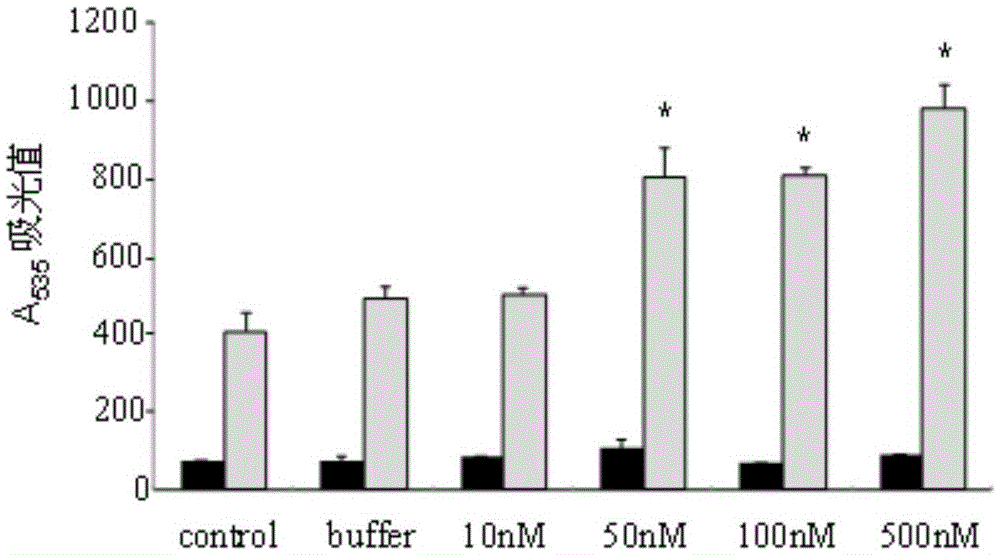A method for improving the osteogenic differentiation ability of human mesenchymal stem cells
A technology of osteogenic differentiation and mesenchymal stem cells, applied in biochemical equipment and methods, animal cells, vertebrate cells, etc., can solve problems such as carcinogenesis, interfere with normal gene expression, and affect genome stability, so as to improve differentiation ability and technology Simple, easy-to-operate effect
- Summary
- Abstract
- Description
- Claims
- Application Information
AI Technical Summary
Problems solved by technology
Method used
Image
Examples
specific Embodiment approach 1
[0017] Embodiment 1: The method for improving the differentiation ability of human mesenchymal stem cells in this embodiment is carried out according to the following steps:
[0018] 1. Optimizing the synthesis of the hNanog gene sequence: without changing the encoded amino acid sequence of the hNanog gene, optimizing the codons of the hNanog gene to obtain the optimized hNanog gene;
[0019] 2. Carrier connection: use EcoRI and NdeI to double-digest the optimized hNanog gene to obtain the target gene fragment, then use EcoRI and NdeI to double-digest the pET28b plasmid to obtain the carrier fragment, and combine the target gene fragment and the carrier fragment at 16 ℃ for 24 hours to obtain the pET28b-nanog recombinant expression vector;
[0020] 3. Low temperature induction of competent Escherichia coli and optimized hNanog recombinant protein expression: Transform the pET28b-nanog recombinant expression vector into Escherichia coli competent cells, and after 12 hours of in...
specific Embodiment approach 2
[0024] Specific embodiment two: the difference between this embodiment and specific embodiment one is: the system of double enzyme digestion of hNanog gene in step two is as follows:
[0025] Element
[0026] Enzyme digestion reaction conditions: 37°C water bath, 4h. Others are the same as in the first embodiment.
specific Embodiment approach 3
[0027] Specific embodiment three: the difference between this embodiment and specific embodiment one or two is: the system of pET28b plasmid double-enzyme digestion in step two is as follows:
[0028]
[0029]
[0030] Enzyme digestion reaction conditions: 37°C water bath, 4h. Others are the same as in the first or second embodiment.
PUM
 Login to View More
Login to View More Abstract
Description
Claims
Application Information
 Login to View More
Login to View More - R&D Engineer
- R&D Manager
- IP Professional
- Industry Leading Data Capabilities
- Powerful AI technology
- Patent DNA Extraction
Browse by: Latest US Patents, China's latest patents, Technical Efficacy Thesaurus, Application Domain, Technology Topic, Popular Technical Reports.
© 2024 PatSnap. All rights reserved.Legal|Privacy policy|Modern Slavery Act Transparency Statement|Sitemap|About US| Contact US: help@patsnap.com










